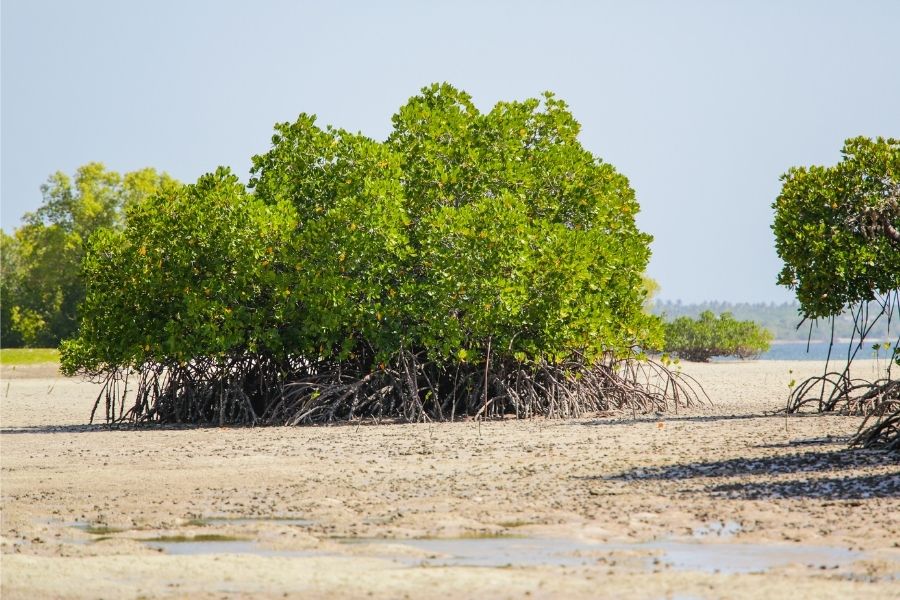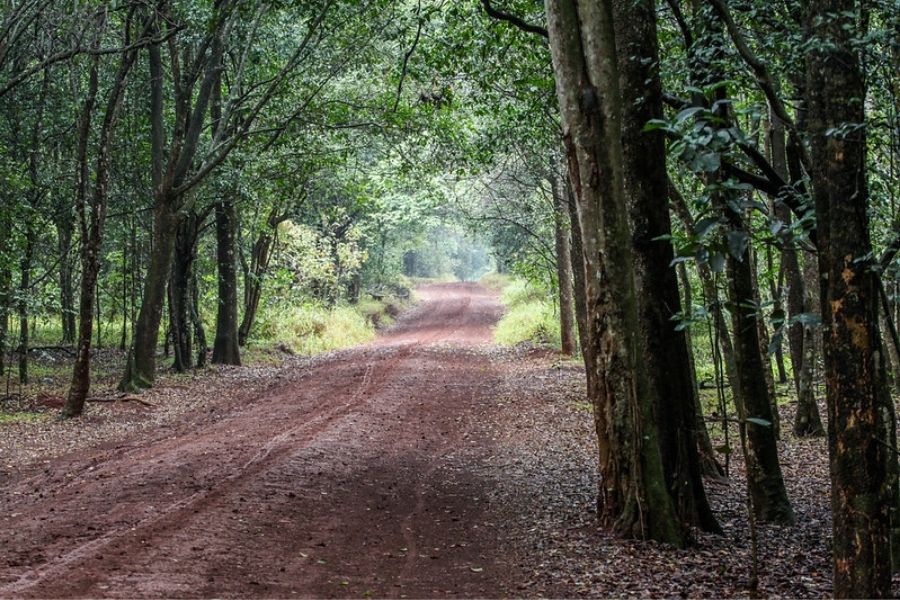Botanical Safari in Kenya: A Living Tapestry of Landscapes, Plants & Cultures
Discover the plants, tribes, and landscapes that make Kenya a safari beyond wildlife
Welcome to Kenya – A Safari That Starts with the Soil
Your journey doesn’t always begin with roaring lions or galloping zebras. Sometimes, it begins softly—beneath the palms swaying along Kenya’s Indian Ocean coast, where sea breezes carry the scent of salt and sun.
This is a different kind of safari. One that guides you through Kenya’s living landscape—through its towering trees, rare flowers, shifting biomes, and the rich cultural roots that tie nature and people together.
At Blavals Safaris, we call it a botanical and cultural safari, and it’s one of the most quietly breathtaking journeys you’ll ever take.
Coastal Kenya – Where Palms and People Meet the Sea
As you land in Mombasa, Diani, or Malindi, the first thing that greets you, besides the warm coastal air, is the unmistakable shape of coconut palms and casuarina trees (whistling pines).
These trees didn’t just grow here by chance. The coconut palm arrived centuries ago from the Pacific, floating in on ocean currents. Today, they provide thatched roofing, cooking oil, shade, and the beloved madafu (young coconut drink) that refreshes locals and travelers alike.
Just behind the beaches, mangrove forests line the tidal creeks. These incredible trees survive in saltwater, anchoring the coast and providing habitats for fiddler crabs, mudskippers, and juvenile fish.
Cultural Highlight: The Swahili People of the Coast
Along the coast, explore Swahili culture in Lamu, Gedi, and Watamu. The Swahili people have blended African, Arab, and Persian influences into a coastal lifestyle of trade, architecture, and faith.
▫️ Visit the Ruins of Gedi, a once-thriving Swahili town hidden in coral rag forest.
▫️ Tour Mida Creek by dhow, visit local fishing villages, and explore mangrove conservation projects guided by local elders.
Arabuko-Sokoke Forest – Kenya’s Last Coastal Rainforest
Not far from Watamu lies Arabuko-Sokoke Forest Reserve—one of East Africa’s most important biodiversity hotspots. This forest is home to three distinct forest types:
▫️ Mixed forest – thick canopies and hardwood trees
▫️ White sand woodland – open, dappled light, and butterflies
▫️ Red soil thicket – dense, warm, and humming with life
Here, you may spot the rare Golden-rumped Elephant Shrew, Sokoke Scops Owl, or hear the distant call of the Malindi Pipit.
Tsavo East & Tsavo West – Pink Sands and Prickly Power
Heading inland, the land becomes drier, warmer, and redder. The Mombasa–Nairobi highway slices between Tsavo East and Tsavo West National Parks, together Kenya’s largest protected area.
This is the domain of acacia-commiphora woodland, a spiky and dry landscape where life thrives in thorny silence.
▫️ Over 40 species of acacia flourish here, from low scrubs to elegant umbrella trees.
▫️ Towering above them: the magnificent baobab, Africa’s tree of life, with trunks wide enough to hide a family of elephants.
Cultural Highlight: The Taita and Kamba Tribes
In the Taita Hills and Tsavo region, meet the Taita people, traditional farmers and herbalists with deep forest knowledge. To the northeast, the Kamba are renowned for their intricate wood carvings and plant-based medicine.
▫️ Enjoy a Taita cultural trek through forested hills.
▫️ Visit Kamba artisan cooperatives near Voi or Machakos to see how plant life inspires sculpture and home goods.
From Savannas to Cities – Nairobi and the Southern Highlands
As you near Nairobi, the land rises. Rolling grasslands, cultivated farms, and forested hills mark your entry into Kenya’s highlands.
Here, you’ll see:
▫️ Purple Jacaranda trees lining city streets
▫️ Bright orange African Tulip Trees (Nandi Flame)
▫️ California-style palms, introduced in colonial times
▫️ And colorful bougainvillea hedges blooming year-round
This is also Kenya’s breadbasket. Near Nairobi, farms grow coffee, tea, maize, wheat, roses, and fruits from mangoes to apples—all nourished by the volcanic soils of the Great Rift Valley.
Mount Kenya – Kenya’s Botanical Crown Jewel
Mount Kenya is not just the country’s tallest mountain—it’s a botanical time machine.
Starting from the farmland at the base, you ascend through:
▫️ Highland rainforest
▫️ Bamboo forest
▫️ Moorland with giant lobelias and senecio plants
▫️ Alpine tundra with snow and glaciers
Climbing Mount Kenya is like walking through four ecosystems in one day.
The Great Rift Valley Lakes – Wetlands, Trees & Birds
Back down in the valley, Lake Naivasha, Nakuru, and Elementaita sit like glittering jewels. Around their edges, you’ll find:
▫️ Dense stands of papyrus filtering the water
▫️ Yellow-barked acacias and the surreal candelabra euphorbia
▫️ Flamingos, fish eagles, and hippos in the shallows
Western Kenya & Kakamega Forest – A Rainforest Left Behind
In Kakamega, you step into a fragment of the once-vast Congo Basin rainforest. Giant ferns, thick lianas, and rare butterflies fill the understory.
Cultural Highlight: The Luhya People
The Luhya of western Kenya are deeply connected to the forest. They use local plants for medicine, rituals, and food. Visit traditional healers, try indigenous herbal teas, and join in song and drum ceremonies.
Northern Adventures – Samburu, Turkana & Desert Flora
To the north, Kenya turns rugged, dramatic, and dry.
▫️ Samburu National Reserve features doum palms—rare double-trunked palms—and desert-adapted animals like the Grevy’s zebra and gerenuk.
▫️ Travel further to Lake Turkana, where volcanic hills, lava beds, and desert plants create an otherworldly landscape.
Cultural Highlight: The Samburu and Turkana Tribes
▫️ Samburu are semi-nomadic pastoralists, culturally related to the Maasai. Learn about their beaded jewelry, livestock traditions, and plant lore.
▫️ Turkana people live in the driest part of Kenya. Visit traditional huts, hear desert survival stories, and witness how they harvest plants in harsh conditions.
Sample Botanical & Cultural Safari Itinerary (10 Days)
Day 1–2: Arrive in Watamu – Mangrove walks, Swahili culture, Ruins of Gedi
Day 3: Arabuko-Sokoke forest hike + Mida Creek dhow cruise
Day 4–5: Tsavo East/West – Acacia forest drive + Taita tribe visit
Day 6: Nairobi – Karura Forest, City flora tour, Coffee farm visit
Day 7–8: Mount Kenya hike or lodge stay with local farm tour
Day 9: Lake Naivasha papyrus walk + cultural exchange with Kikuyu farmers
Day 10: Return or extend to Kakamega or Samburu
Day 3: Arabuko-Sokoke forest hike + Mida Creek dhow cruise
Day 4–5: Tsavo East/West – Acacia forest drive + Taita tribe visit
Day 6: Nairobi – Karura Forest, City flora tour, Coffee farm visit
Day 7–8: Mount Kenya hike or lodge stay with local farm tour
Day 9: Lake Naivasha papyrus walk + cultural exchange with Kikuyu farmers
Day 10: Return or extend to Kakamega or Samburu
Frequently Asked Questions (FAQs)
Q1: What is a botanical safari?
A botanical safari focuses on the natural plant life of Kenya, from forests and flowers to the traditional uses of trees by local tribes. It’s ideal for nature lovers, photographers, and eco-conscious travelers.
A botanical safari focuses on the natural plant life of Kenya, from forests and flowers to the traditional uses of trees by local tribes. It’s ideal for nature lovers, photographers, and eco-conscious travelers.
Q2: Can I combine wildlife game drives with this itinerary?
Absolutely. At Blavals, we design flexible trips that blend botanical, cultural, and wildlife experiences.
Absolutely. At Blavals, we design flexible trips that blend botanical, cultural, and wildlife experiences.
Q3: Which tribes are included in this journey?
You’ll engage with Swahili, Taita, Kamba, Maasai, Luhya, Samburu, and Turkana communities—each with unique traditions tied to the land.
You’ll engage with Swahili, Taita, Kamba, Maasai, Luhya, Samburu, and Turkana communities—each with unique traditions tied to the land.
Q4: Is this tour suitable for families or older travelers?
Yes! Activities are customizable to fitness levels and interests. From forest walks to village visits, there’s something for everyone.
Yes! Activities are customizable to fitness levels and interests. From forest walks to village visits, there’s something for everyone.
Q5: What should I pack for a botanical safari?
Comfortable walking shoes, neutral clothes, a field notebook, sunscreen, a hat, and a reusable water bottle. A field guide on East African plants adds even more value.
Comfortable walking shoes, neutral clothes, a field notebook, sunscreen, a hat, and a reusable water bottle. A field guide on East African plants adds even more value.
Book Your Botanical & Cultural Safari with Blavals
At Blavals Safaris, we take pride in crafting one-of-a-kind journeys that go beyond the usual. Our expert local guides, ethical partnerships with tribal communities, and love for the land mean your safari will educate, inspire, and stay with you forever.
References:
Some of the valuable books to use on your botanical safari include;
◾ Field Guide to the Wildflowers of East Africa. By Michael Blundell, 1987, HarperCollins
◾ Trees of Kenya. By Tim Noad and Ann Birnie, 1989, T.C Noad &A. Birnie, Nairobi.
◾ Wayside flowers of East Africa. By Teresa Sapieha, 1989, Sapieha, Nairobi, Reprinted 2000




